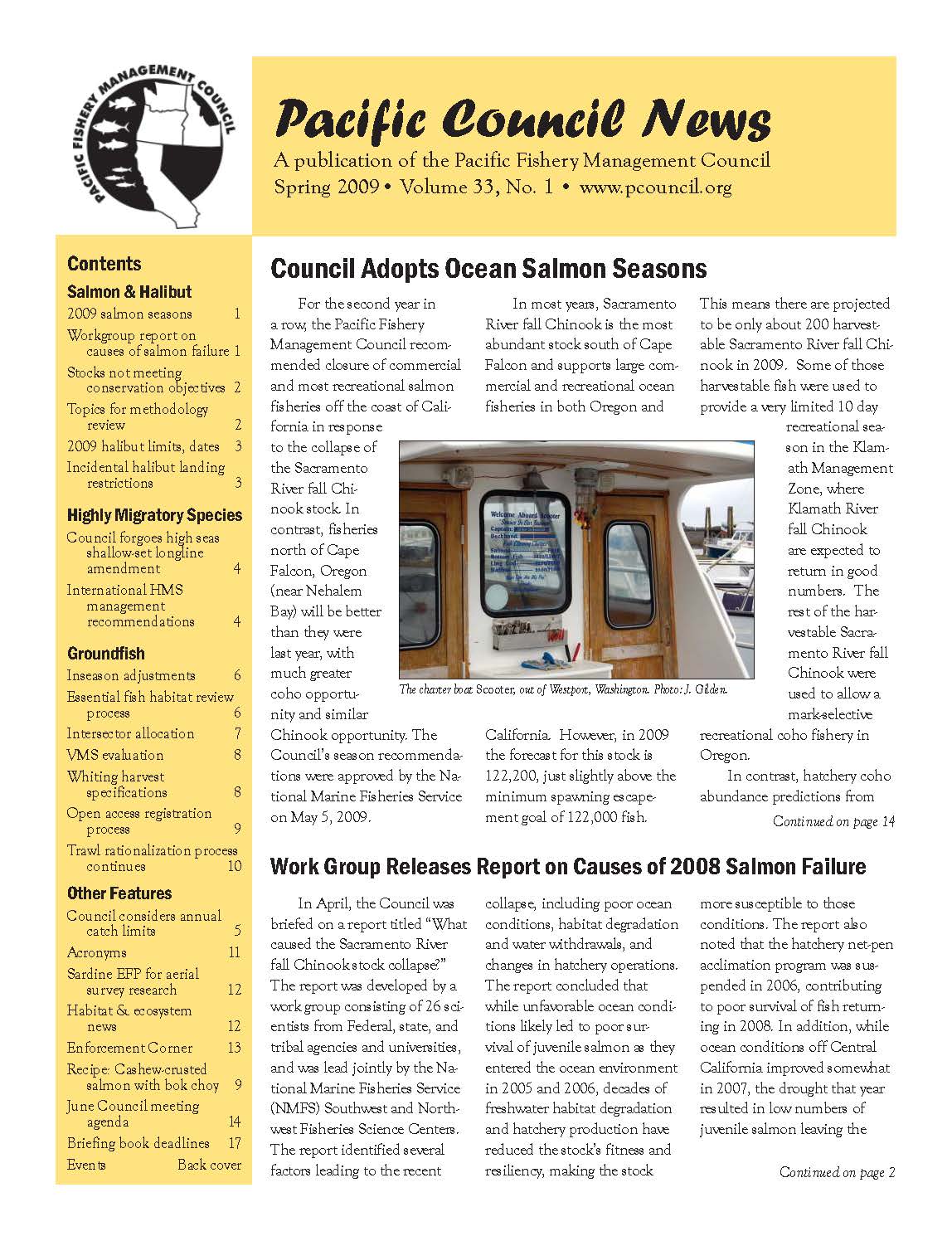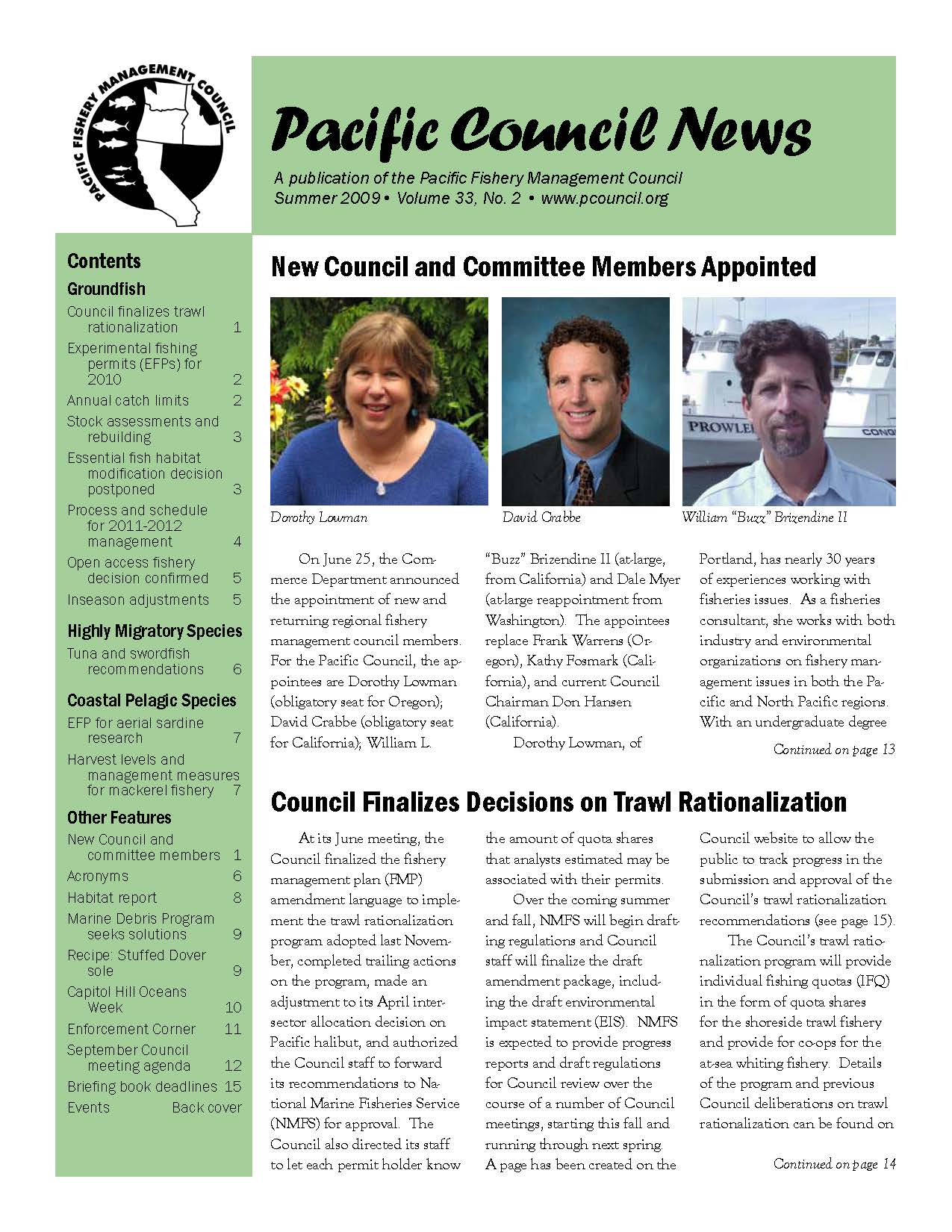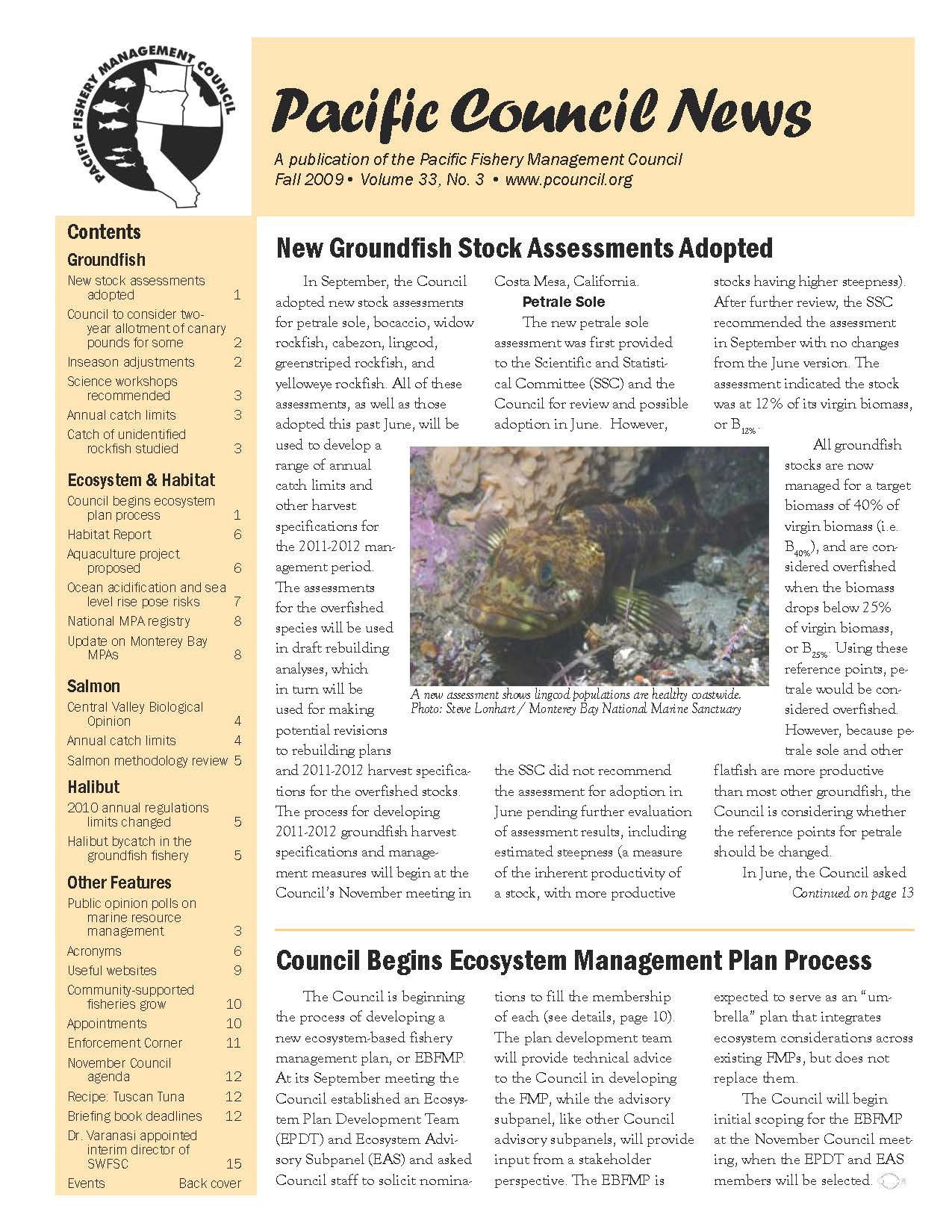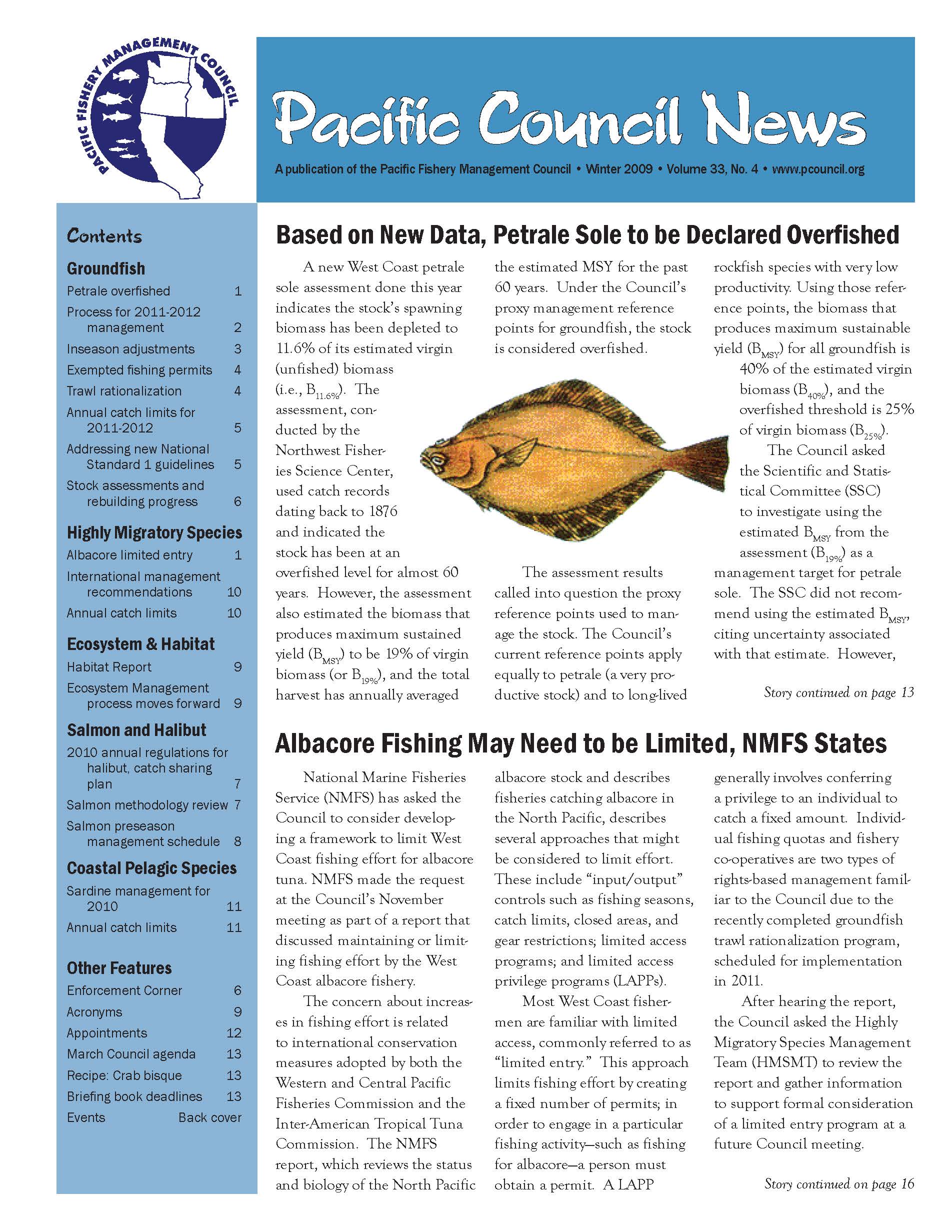2009 in brief
Salmon: As in 2008, the Council once again adopted very restrictive salmon seasons. The commercial fishery and most recreational fisheries off the coast of California were closed in response to the collapse of the Sacramento River fall Chinook stock. However, fisheries north of Cape Falcon were better than in 2008, with much more coho opportunity. In April, the Council was briefed on the causes of the Sacramento River fall Chinook collapse, which included poor ocean conditions, degraded habitat, water withdrawals, and changes in hatchery operations. Queets River and Western Strait of Juan de Fuca coho met the Overfishing Concern threshold.
Ecosystem: The Council began the process of developing a new Ecosystem-Based Fishery Management Plan (now called the Fishery Ecosystem Plan). The Ecosystem Plan Development Team and Ecosystem Advisory Subpanel were formed.
Halibut management was routine, but the total allowable catch for Area 2A was down about 22 percent from 2008. The Council adopted landing restrictions for incidental halibut catch in commercial salmon and longline sablefish fisheries.
Highly migratory species: The Council decided not to move ahead with a West Coast high seas shallow-set longline fishery, which they had been considering for two years. There were concerns about the take of protected species, such as loggerhead sea turtles, in the fishery. NMFS asked the Council to consider ways to limit albacore fishing; the Council began the process of considering a limited entry program for the fishery.
All species: The Council worked to establish annual catch limits for all of its managed species in response to requirements in the reauthorized Magnuson-Stevens Act. The new requirements were incorporated into Amendment 23 to the groundfish FMP and Amendment 16 to the salmon FMP.
Groundfish:
- Essential fish habitat: The Council began reviewing essential fish habitat for groundfish and solicited proposals for changes to groundfish EFH.
- Trawl catch shares: Intersector allocations for trawl and non-trawl sectors were adopted for Amendment 21 species. The Council finalized language to implement the trawl rationalization program and worked on trailing actions, including accumulation limits, eligibility criteria for ownership of individual fishing quota, and an adaptive management program. The Council discussed allocation of quota shares for overfished species and discussed allocating more canary rockfish that had been set aside for the adaptive management program.
- Vessel monitoring systems (VMS): The ad hoc VMS Committee began evaluating performance of VMS systems, and the effects of VMS on small vessel fleets.
- Open access: The Council recommended a preseason registration process for open access fishing vessels seeking to take certain groundfish species.
- Overfished species: Petrale sole was declared overfished late in 2009. Canary rockfish and Pacific ocean perch were rebuilding more slowly than expected, but bocaccio, cowcod, darkblotched and widow rockfish were rebuilding faster than expected.
Coastal pelagic species: The Council reviewed proposals for aerial survey research on Pacific sardine and discussed CPS essential fish habitat requirements.
Habitat: The Habitat Committee focused on Klamath dam removal, the Columbia River Biological Opinion, and the proposed Bradwood Landing liquified natural gas terminal (which was never built). The Council sent a letter on the Central Valley Biological Opinion. Hubbs-Sea World presented to the Council on their offshore aquaculture demonstration project.
Admin: Dorothy Lowman, David Crabbe and Buzz Brizendine were appointed to the Council. Council staff attended Capital Hill Oceans Week.
Click image for full newsletter.



